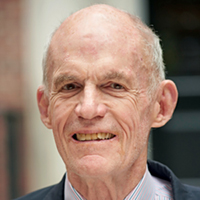Please join the NYU School of Law community on Tuesday, January 12 from 10:00 a.m. to 6:00 p.m. to celebrate University Professor and John Edward Sexton Professor of Law Richard Stewart’s 50th year of teaching and his indelible impact on the fields of administrative and environmental law and global governance. The conference will be convened via Zoom and will begin with welcome remarks by Dean Trevor Morrison and Dick’s colleagues at the Law School. The program will include four panels on the areas in which Dick has become a leading authority. To attend the conference, please register here.
Panel 1 – Administrative Law
- Rachel Barkow, The Reformation of American Criminal Law
- E. Donald Elliot & Daniel Esty, The End Environmental Externalities Manifesto: A Rights-Based Foundation for the Next Fifty Years of Environmental Law
- Jerry Mashaw, Is Administrative Law at War with Itself?
- David Schoenbrod, Richard Stewart’s Perennial Question: “How’s This Going to Work?”
- Cass Sunstein, Behaviorally Informed Mandates? Internalities, Externalities, and Fuel Economy Rules
Panel 2 – Environmental Law
- Richard Revesz, Poisoning America: A “Reasoned Consistency” Response to the Trump Administration’s Regulatory Shell Game
- Lisa Heinzerling, Nondelegation on Stilts
- Richard Lazarus & Libby Dimenstein, Stewart’s Paradoxes of Liberty, Integrity and Fraternity: Sobering Lessons from COVID-19 for Environmental Law
- Jonathan B. Wiener, Disregard and Due Regard
Panel 3 – Global Governance
- Sabino Cassese, Ruling from Below: Common Constitutional Traditions and Their Role
- Kristina Daugirdas, Funding Global Governance
- Michael Oppenheimer, Whatever Works: The Long and Winding Road Toward Climate Action
Panel 4 – Applications to Practice
- Jane Stewart, Adventures with Dick & Jane in Environmental Law
- Annie Petsonk, How Professor Stewart has Promoted Equity, Effectiveness and Transparency in Environmental Law: A Practitioner’s View
- James Tripp, Richard B. Stewart: A Personal Account and Role at EDF
- George Van Cleve, Controlling Transboundary Pollution: The Case of Chesapeake Bay Restoration


